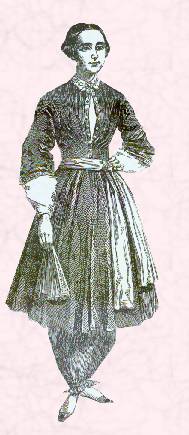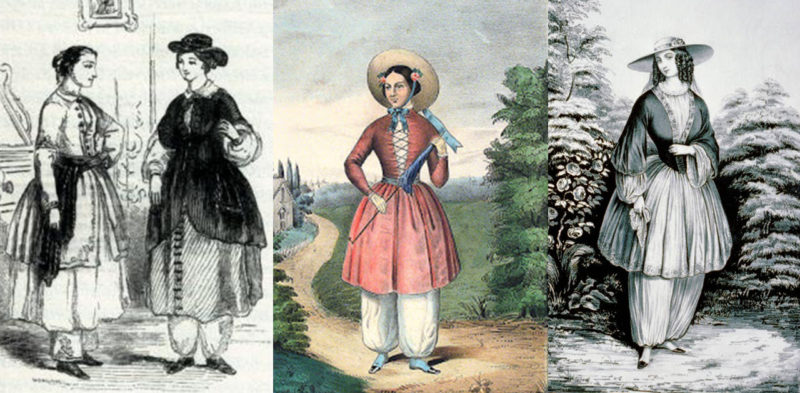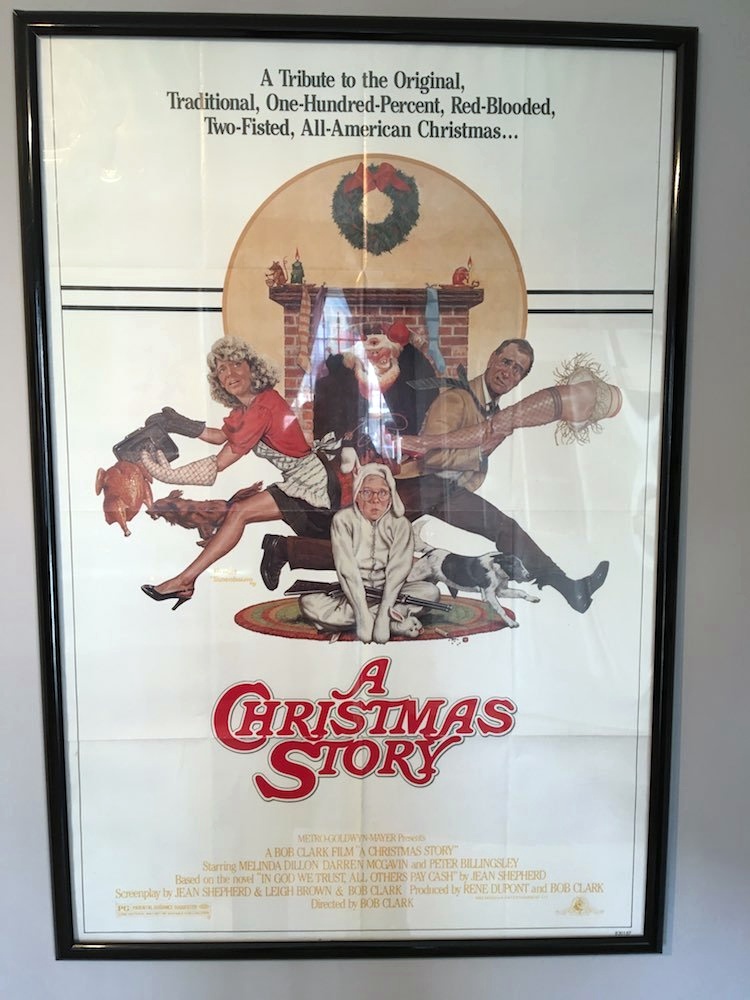The Seeds of Dress Reform are Sown
When settlers came to what is now the United States, it wasn’t unusual to see Native American women wearing leggings under their skirts. European women were not immune to their functionality. Some women started wearing a version of pants under their skirts during the French Revolution. This combination was not lost on American settlers. Life was tough enough in a new land and it often meant that men and women would work together as equals in order to build a new nation. The seeds of dress reform were sown long before Amelia Jenks Bloomer brought us her radical idea of dress reform in the mid-19th century.
By the mid-19th century, women were seeking social and political change. Part of the change they sought included freedom of movement. Women were starting to participate in sports such as sailing and golf. The bicycle was coming into existence too, and wearing a skirt was prohibitive to the enjoyment of these activities. Women started wearing male clothing to ride horses in the 17th century, so why not adopt that mode of dress for these other sports?
The social changes taking place during the mid-19th century were definitely reflected in the attempt to reform fashion. These changes appeared in garments worn by both women and men, but it is the attempted change in women’s fashion that was most noticeable.

Amelia Jenks Bloomer
Amelia Jenks Bloomer was a major proponent of social change in the United States. She actively campaigned for women’s rights and was a supporter of the temperance movement. After attending the first Women’s Rights Convention in Seneca Fall, New York, in 1848, she created a newspaper for women titled The Lily. In addition to women’s rights and temperance, she also championed women’s dress reform. Bloomer advocated for women to ditch corsets and the up to 15 pounds of petticoats worn under their skirts. She was influenced by traditional Turkish dress; wide loose-fitting pants that gathered at the ankle. Over this was a skirt that stopped at the knee. The tops she advocated were also looser-fitting.
She was often ridiculed when wearing her new design in public, but women would smile and give a tacit nod of approval. The Biography website quotes her as saying the following in regard to her ‘bloomers.’
“As soon as it became known that I was wearing the new dress, letters came pouring in upon me by the hundreds from women all over the country making inquiries about the dress and asking for patterns – showing how ready and anxious women were to throw off the burden of long, heavy skirts.”
Bloomer dresses did not become the norm at this time and when the hoop skirt was developed, Amelia Bloomer mostly returned to wearing skirts. The weight of the petticoats worn under skirts was removed making women’s clothing at least a bit less cumbersome and restrictive.
Find out more on dress reform and social change and how they were intertwined in our next post.
– Donna Klein
Resources
Find out more about dress reform.
http://www.fashion-era.com/rational_dress.htm
http://fashion-history.lovetoknow.com/clothing-types-styles/bloomer-costume
https://etd.ohiolink.edu/!etd.send_file?accession=osu1226084718&disposition=inline
http://www.victorianweb.org/art/costume/nunn5.html












Leave A Comment